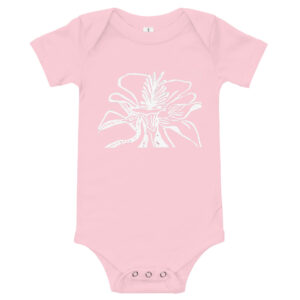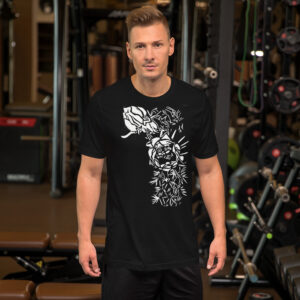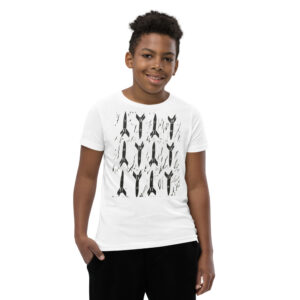
I have recently started to expand my experiments with print to monotype and collagraph printmaking. This has led me to experimenting with carborundum.
Collagraph printmaking is a fusion of intaglio and relief printmaking, It is a collage of sorts with different materials adding textural elements. You can read more about different printmaking types here.
Carborundum is a sand like material which is made up of silicon carbide which has been traditionally used to grain lithograph stones. In Collagraph printmaking, carborundum can be used with a glue or acrylic medium to provide different textures and values in your print.
There are some Carborundum substitutes out there such as fine play sand like you would find in a playground mixed with glue. However, I did not get that into alternatives this time.
You can find a list of printmaking substitutes I have used in my own printmaking experiments here.
This post contains affiliate links, which generates some small commissions at no extra cost to you. This commission helps keep this blog and shop running. Thank you for your support. See my disclosure form for more information.
In my experiments, I used several mixes of Carborundum Gel from Akua.
Carborundum Mix 1
I used a 50/50 mix of this carborundum gel with an acrylic medium to create a less abrasive and less textured surface. This combination is supposed to yield a lighter area of value in your print.
Carborundum Mix 2
In the second mixture, I mixed about ¾ of the carborundum gel with ¼ of the acrylic medium. This was supposed to yield a darker and more mid tone affect in my print.
Carborundum Mix 3
The third and darkest value was created by using the carborundum gel straight from the container.
Screens
The thing with the carborundum gel is it can be painted on a plate or a sheet of some sort or screen printed on to achieve a smooth consistent surface.
I did not have a screen available, so I cut a sheet of sheer curtains and taped it to the table and then screened the carborundum gel right onto the surface of the plate I was using.
Drying Time
According to my research, the carborundum gel was supposed to dry within 20 minutes of application. What I did first was screen the gel onto the plate and then I painted on top of it.
When I do this again, I would utilize this time to remove the sky section as I wanted it to be the lightest, but instead it ended up being darker after I applied ink.
It did not affect the print negatively, it just added a more moody atmosphere to the print.
Process
- Starting with a drawing, I simplified mine as much as I could and only masked out the different values a bit.
- I screened my carborundum onto my plate, which is transparent, and I waited for it to dry.
- Using a light box, I placed my drawing under the dried carborundum plate and used the different mixtures of the carborundum to paint areas I wanted to be different values.
- Afterward, I waited until it was dry and in the spirit of adding a lithography spin, I drew out some areas I wanted to show the lightest by adding a white wax pencil marks. This blocks the texture of the carborundum from gathering ink and only prints the lightest value.
- Because I am a relief printmaker for the most part, I rolled with a brayer, the ink onto the surface of the plate.
- In my first attempt, I gently spritzed my printmaking paper with water, and then blotted it with a towel. I ran it through an etching press.
- On one of the prints, I removed a lot of ink using tarlatan. The carborundum kept hold of the ink pretty well though. This is why I was thinking I would have removed the carborundum initially the next time I print.
- I tried a mixture of dried paper and damp paper. Although, I think I liked the damp better.
Results
Here are the results of my experimentation of Collagraph Carborundum.
They all turned out very different. I even added some chalk pastels to one print at the end. The point of the printmaking is to make consistent prints which are all relatively the same.
However, I was learning new materials and thought it was very fun to experiment.
I hope you can learn some from my experiments.








